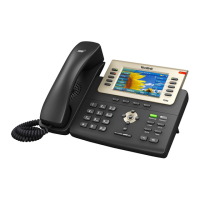A unique numeric identifier
is assigned to the call and
is inserted in the Call-ID
field.
The transaction number
within a single call leg is
identified in the CSeq
field.
The media capability User
A is ready to receive is
specified.
The port on which User B is
prepared to receive the
RTP data is specified.
INVITE—Proxy Server to User
B
The proxy server maps the SIP URI in the
To field to User B. The proxy server
sends the INVITE message to User B.
100 Trying—User B to Proxy
Server
User B sends a SIP 100 Trying response
to the proxy server. The 100 Trying
response indicates that the INVITE
request has been received by User B.
100 Trying—Proxy Server to
User A
The proxy server forwards the SIP 100
Trying to User A to indicate that the
INVITE request has been received by
User B.
180 Ringing—User B to Proxy
Server
User B sends a SIP 180 Ringing response
to the proxy server. The 180 Ringing
response indicates that the User B is
being alerted.
180 Ringing—Proxy Server to
User A
The proxy server forwards the 180
Ringing response to User A. User A
hears the ring-back tone indicating that
User B is being alerted.
200 OK— User B to Proxy
Server
User B sends a SIP 200 OK response to
the proxy server. The 200 OK response
notifies User A that the connection has
been made.
200OK—Proxy Server to User
A
The proxy server forwards the 200 OK
message to User A. The 200 OK

